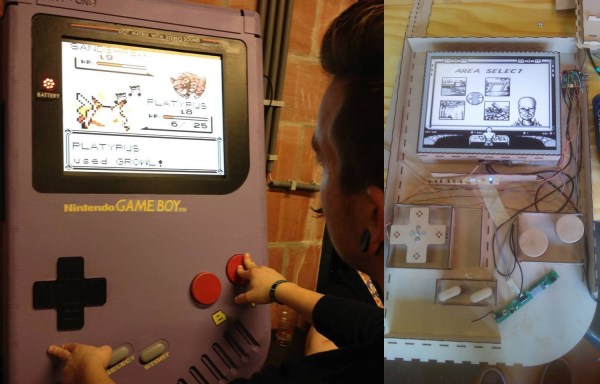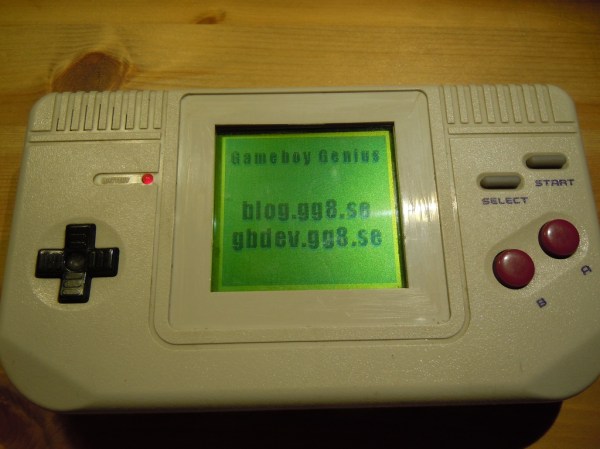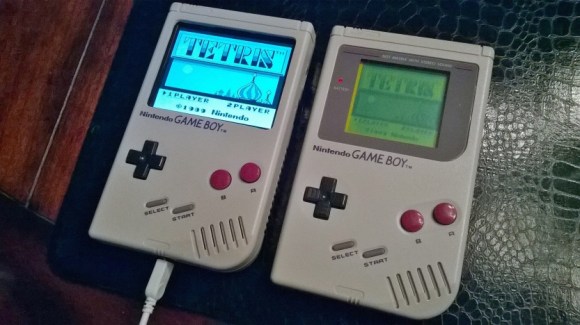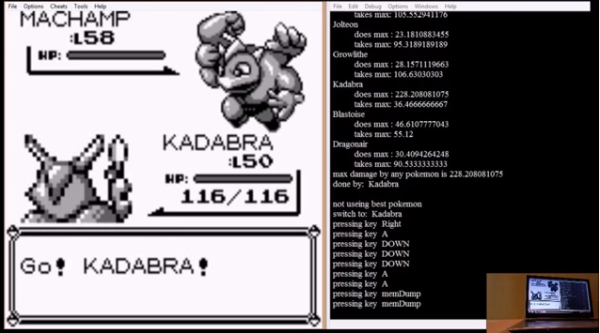What do you get when you put together a classic Game Boy game, some glue code, a streaming video website and 1 internet? Twitch Plays Pokémon (TPP), a social experiment where thousands of people “cooperatively” play a game of Pokémon Red/Blue. TPP was created by an anonymous Australian programmer who enjoyed the SaltyBet interactive channel on twitch.tv. Rather than use SaltyBet’s method of having users interact via an external website, [TPP’s creator] decided to use twitch’s own IRC based chat servers. Starting with VisualBoyAdvance, a popular C/C++ based Game Boy emulator, [TPP’s creator] began building the system. [TPP’s creator] went with python to create the web-to-emulator interface. A JavaScript app displays the live moves on the right side of the screen.
Gameplay is simple – users type their command (Up, Down, A, B) into their IRC or web client. In the original configuration, commands were processed in the order they arrived at the game. The system worked until the whole thing went viral. With thousands of people entering commands at any given time, poor “RED” would often be found spinning in place, or doing other odd things. The effect is so compelling that even [Randal Munroe] has written an XKCD entry about it. To help the players get through some of the tricky parts of the game, [TPP’s creator] added a game mode selection. Users can play in “Democracy” where the system takes votes for several seconds, then issues the highest voted command. The original anything goes game mode was renamed “Anarchy”. Switching from one mode to the other is determined by the users themselves in real-time.
[Devon], one of our readers, has been busy as well. He’s written up a tutorial on turning a Raspberry Pi into a dedicated TPP viewer. We’d love to see a TPP battlestation – a Game Boy modified to display TPP, as well as send commands to the IRC servers when buttons are pressed. Who will be the first reader to knock that hack out?

















